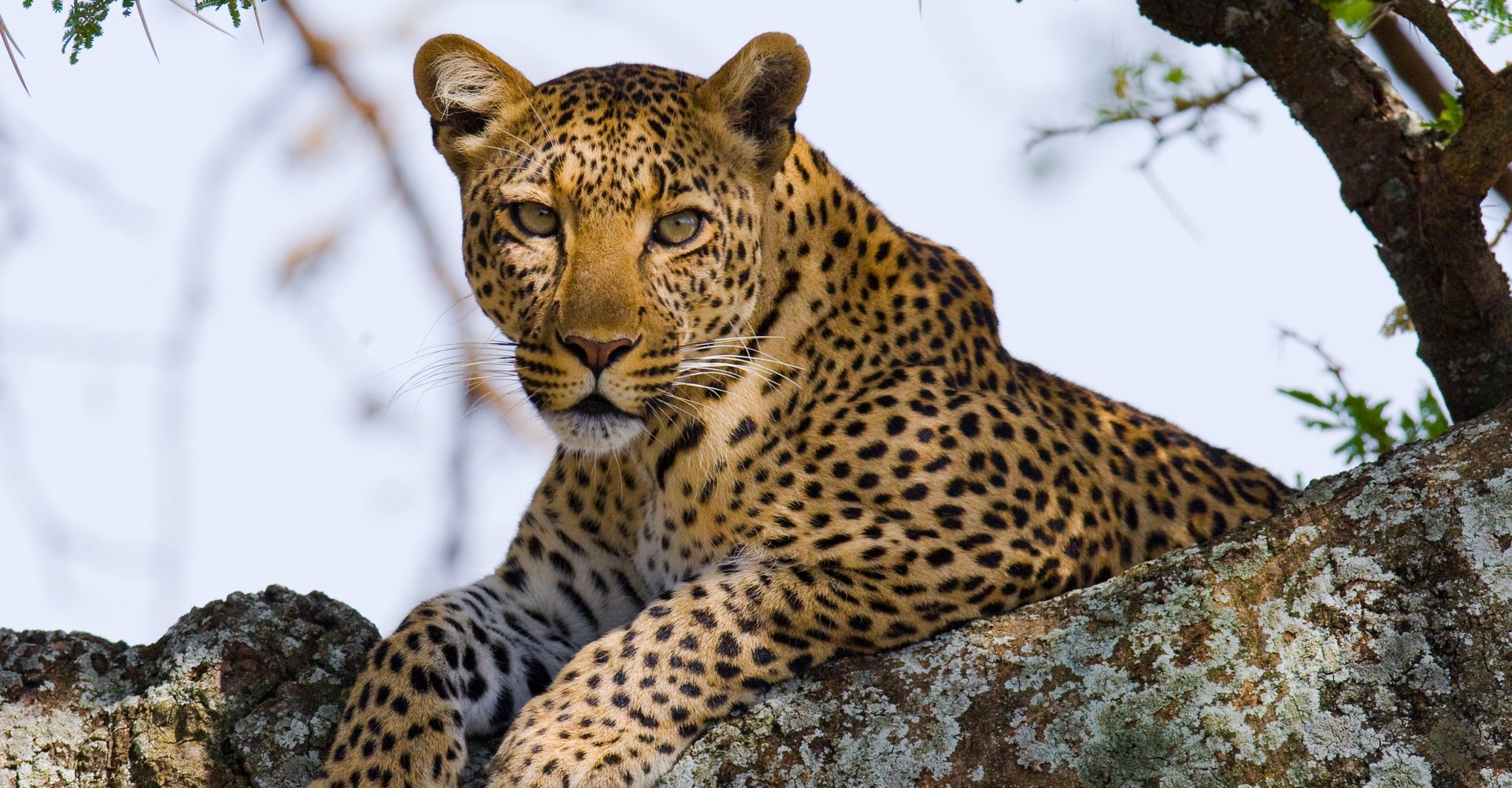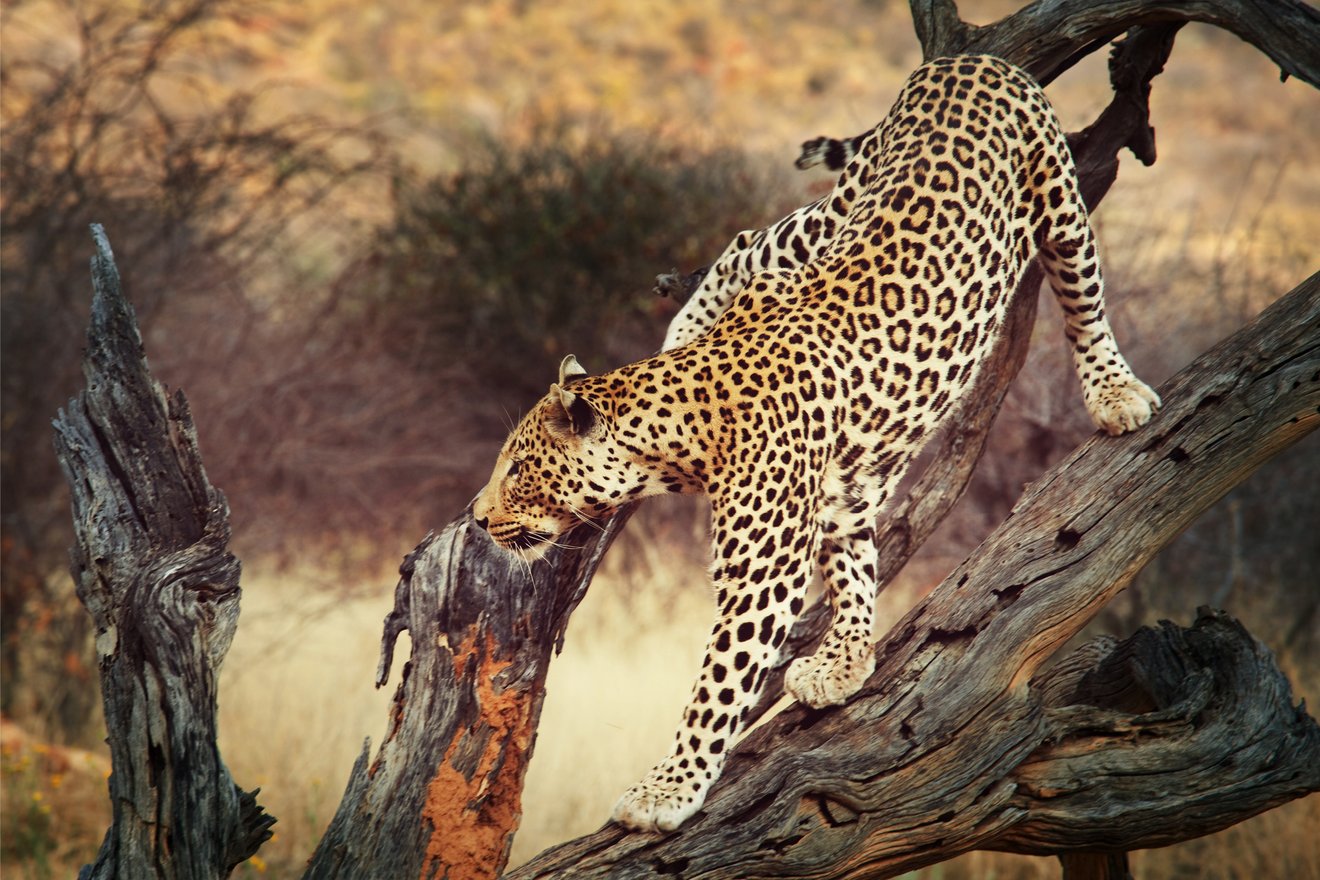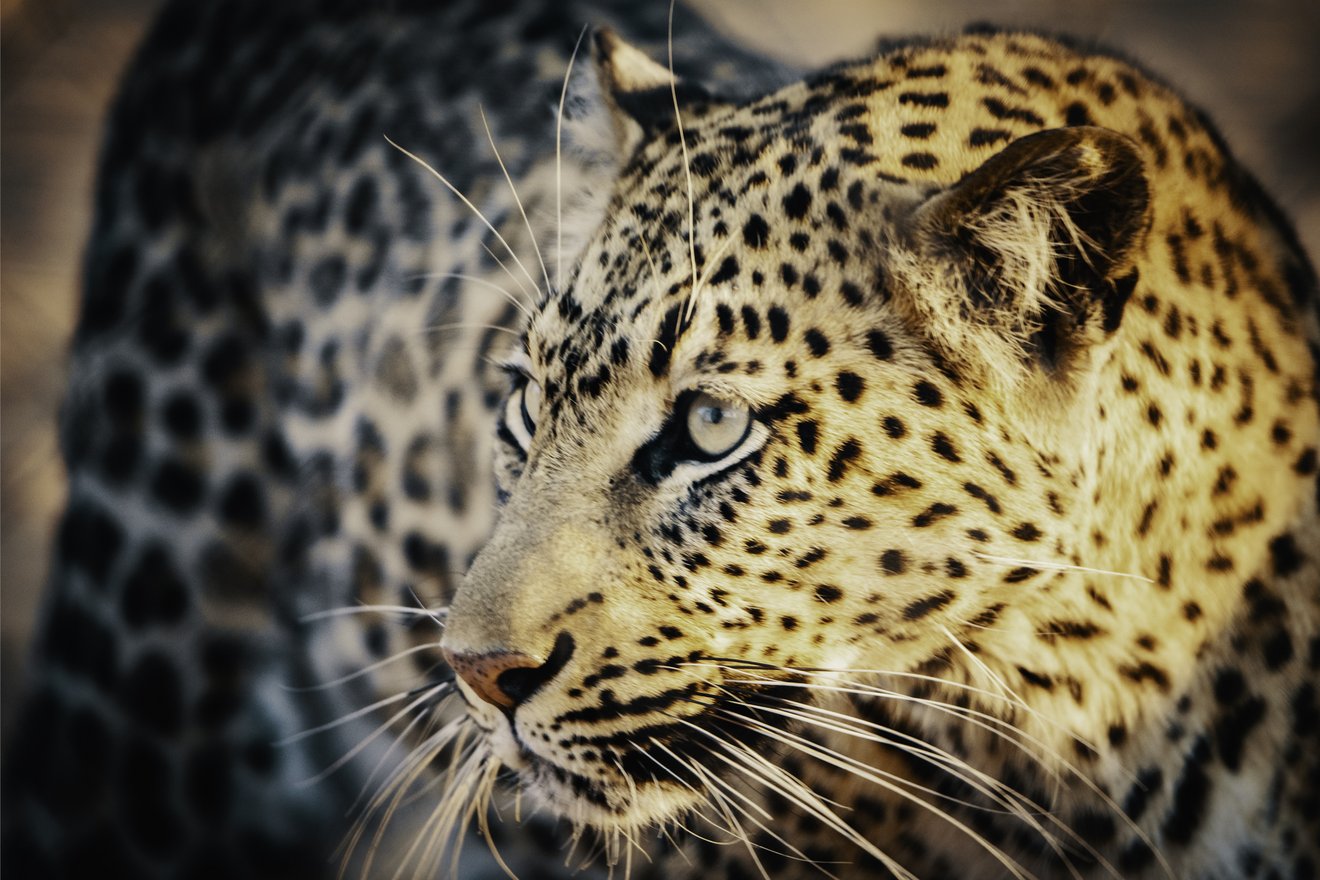Leopards are not without reason among Africa's renowned Big Five. As cunning hunters on silent paws, they impress with a hunting behavior that is unparalleled. These master hunters of the savannah are not only native to Africa. Thanks to their remarkable adaptability, leopards inhabit an astonishing range of habitats—from dense rainforests and dry steppes to mountainous regions.
EFFICIENT HUNTERS WITH A DIVERSE DIET
Leopards are predominantly solitary animals, renowned for their impressive ability to move almost invisibly through various habitats, pursuing a wide range of prey. Their menu includes everything from small rodents to medium-sized ungulates, complemented by birds like guinea fowls and reptiles. This dietary flexibility significantly contributes to the survival of these big cats in diverse environments.
Encounters between males and females mainly occur during mating periods. After a gestation period of about three months, the female typically gives birth to two to four cubs, which she hides in dense underbrush. Threats particularly come from other predators and rival conspecifics.
Despite their relatively wide distribution and adaptability, leopards face significant threats. Habitat loss due to human expansion, conflicts with livestock farmers, and poaching are major challenges for populations worldwide. The situation of the Amur leopard (Panthera pardus orientalis) is especially critical, with fewer than 40 individuals existing in the wild as of 2007. This low number leads to inbreeding issues, affecting genetic diversity and thus the health of the population.





